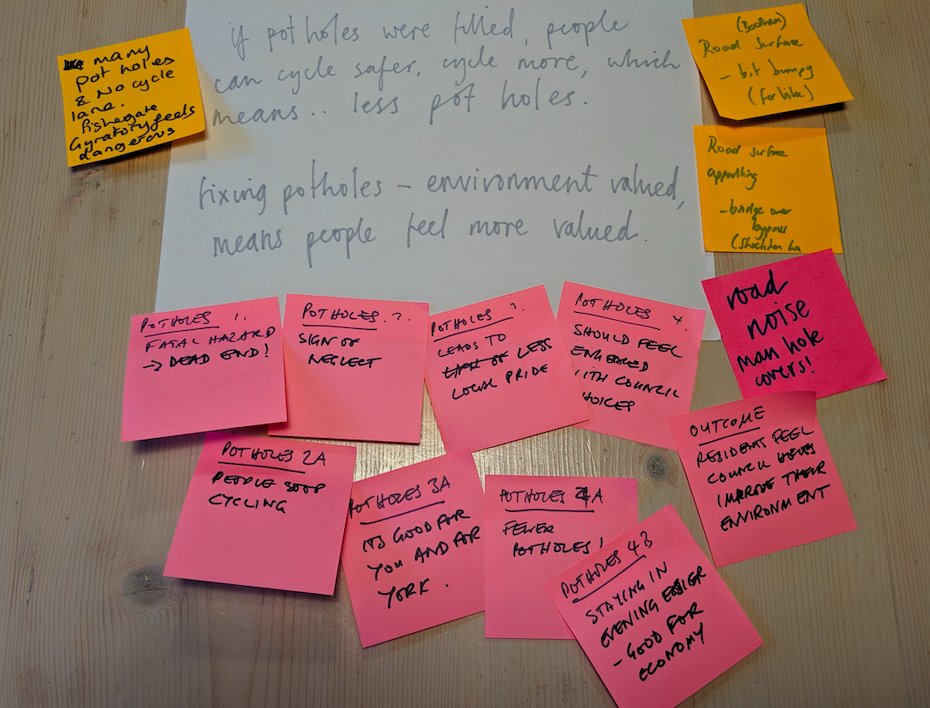
24th April 2019
The Collaborative Hustings led to cross-party agreement for a Citizens’ Assembly for transport to create long-term and cross-party consensus. In getting there the Hustings was structured to move from small scale everyday issues like potholes to overarching aims such as creating a happy city where everyone belongs – but what proved really sticky was what happens in the middle scale in terms of putting ideas into practice…
On 24th April council candidates from all four major parties gathered with 25 members of the public to experiment with a collaborative approach to local elections hustings.
The motivation for experimenting with a collaborative approach in York arises from the fact that council leadership often changes between election cycles and therefore many issues – if they are to be addressed long term – need cross-party co-operation; a point that was noted by some of the candidates.
We chose an issue that everyone agrees is urgent but long-standing:- traffic congestion. We knew there were potentially differences between the parties in terms of the nature of the issue and how to address it, but also that there was plenty of scope for common ground. Traffic congestion is also a very knotty issue with only vague geographic and conceptual boundaries (it connects to health and economy). It is also an issue which has a lot to do with individual people’s actions – and so needs to be addressed collaboratively between the council and citizens.
The approach we took was to see if we could move from the everyday issues each of us experience in our movement around the city to overall goals for movement in York. We asked a spokesperson from each party to respond from the perspective their party and then we sought areas of agreement.
Starting specific: Everyday issues
We began by sharing a journey we do regularly, working together to pull out and note the issues. We then quickly clustered them on the wall. Key issues were: potholes, congestion, air quality; disappearing bike lanes; Park and Ride buses not stopping on their way into town; Pedestrians feeling as though they are at the bottom rather than top of the hierarchy of users.
Explore fundamental purposes: Overarching goals for movement in York
We then distributed each of these clusters to a group to use a ‘7 whys’ approach to get to fundamental purposes. This is where the idea of going from potholes to human happiness comes in. You – a bit like a toddler! – ask ‘why’ seven times to try and get from specific to really articulating why something is important, what its values are.
Our example of the technique was…
Park and Ride buses don’t run late in the evenings. (“why is this important?”)
People can’t get back to their cars after evening theatre or cinema or similar events (“why is….”)
People will drive into the city centre or more likely simply give up on it as a place to spend the evening (“why is…”)
The city centre gets left to those who are living and sleeping there – mainly tourists (“why is….”)
People who live on the periphery of the city cease to feel involved in and invested in the city centre (“why is….”)
The city centre quietly dies and people in the outer parts of York don’t care
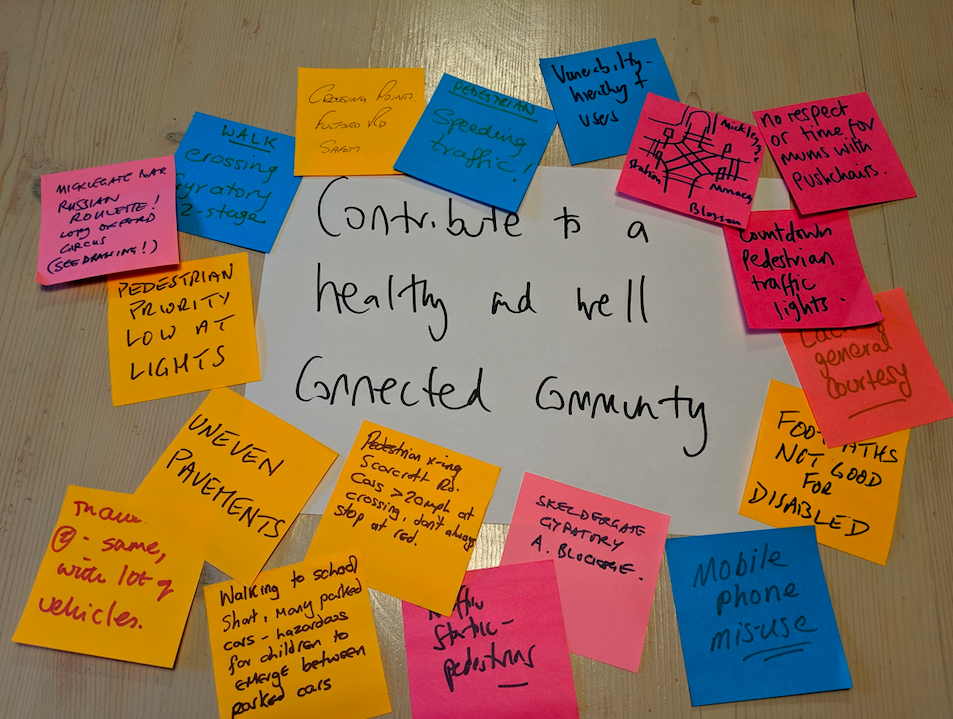
All of which leads to an over-arching goal – We want a transport system which means the whole city belongs to everyone
A series of fundamental purposes – of goals – for movement in York were identified.
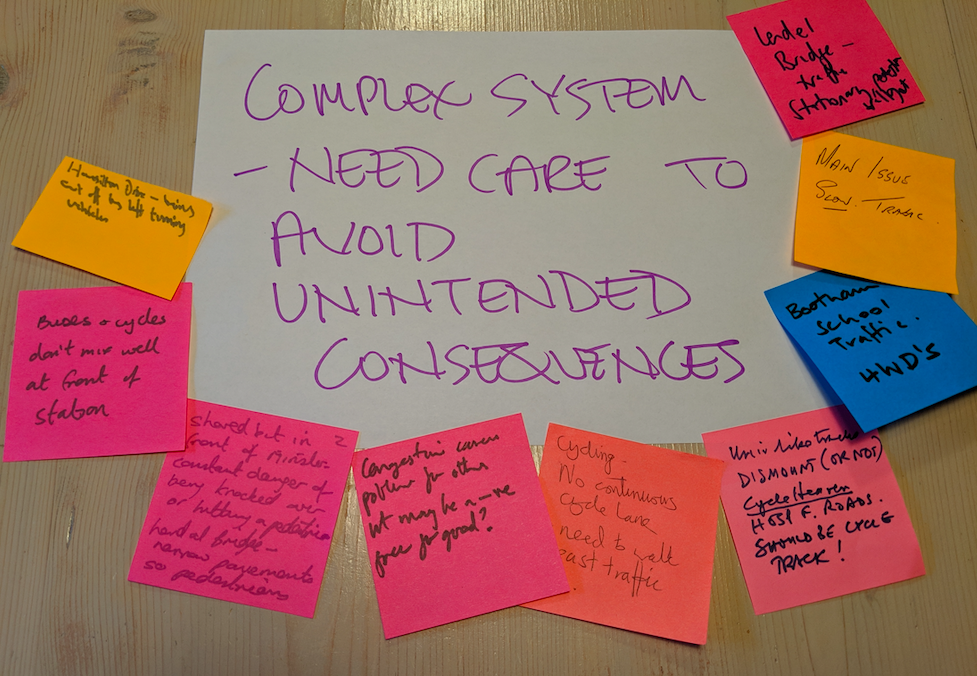
But what proved a bit tricky: questions of implementation
However, it was clear that going through the ‘7 Whys’ was a far from easy process. Many groups got understandably caught up in the fourth or fifth layer of whys which often focused on the difficulty of how to address a specific issue. This was so instructive and illuminating. In York it isn’t that we don’t have well-articulated overarching purposes that are shared between parties. For example, One Planet York; Human Rights City and now Zero Carbon. But what is very tricky, and is the real work of local politics, is the translation of these commitments into practice.
Perspectives from the political parties
At this point we asked each spokesperson to reflect on the issues from the perspective of their party.
The spokespeople were Cllr Peter Dew (York Conservatives); Cllr Andy D’Agorne (York Green Party); Cllr Johnny Crawshaw (York Labour Party) and Cllr Stephen Fenton (York Liberal Democrats) and you will be able to read their statements here soon [currently waiting for them to be approved].
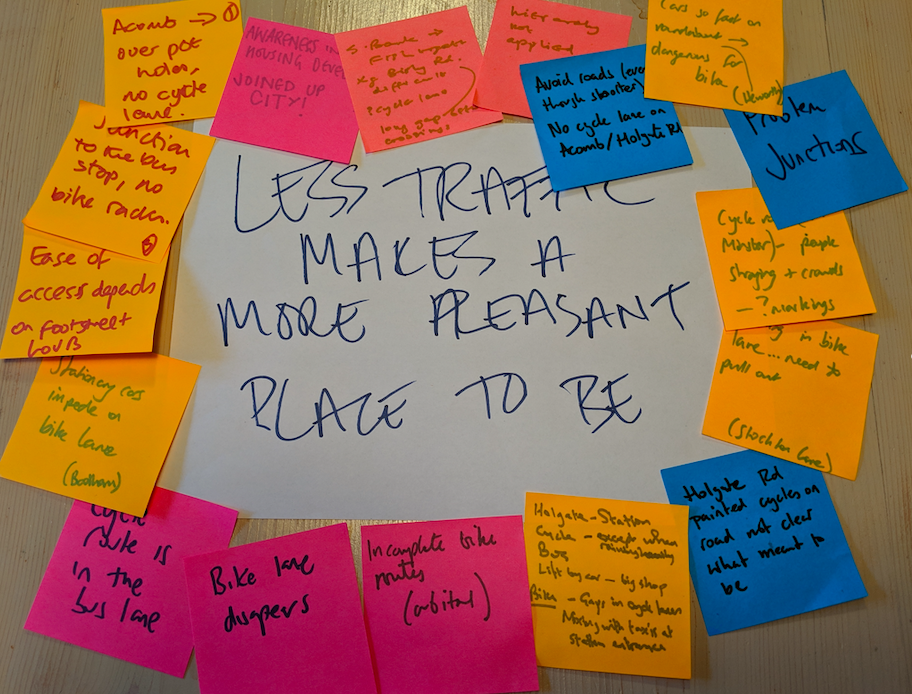
Areas for collaboration: How to build a legitimate vision; translation into policy; levers for change
As the spokespeople were talking we asked everyone else to listen very carefully for areas for collaboration. These were the areas for collaboration that emerged:
Citizens Assembly
There was a shared cross-party commitment to run a Citizen’s Assembly on transport. The shared motivation for this was to take these very difficult issues out of the back and forth of party politics and create legitimacy for a shared long-term approach.
Proactively shape conversations with funders
There was a sense that having this clear and cross-party vison would allow York to develop a common voice in approaching funders. For York to decide what the city wants and base funding approaches on this, rather than simply accepting external priorities.
Policy levers
Responding to the difficulty of the middle level of the issues – the implementation – there was an agreement to explore the effective use of Supplementary Planning Guidance and the forthcoming need to produce a new Local Transport Plan. Both were seen as possible direct outcomes of the Citizens’ Assembly.
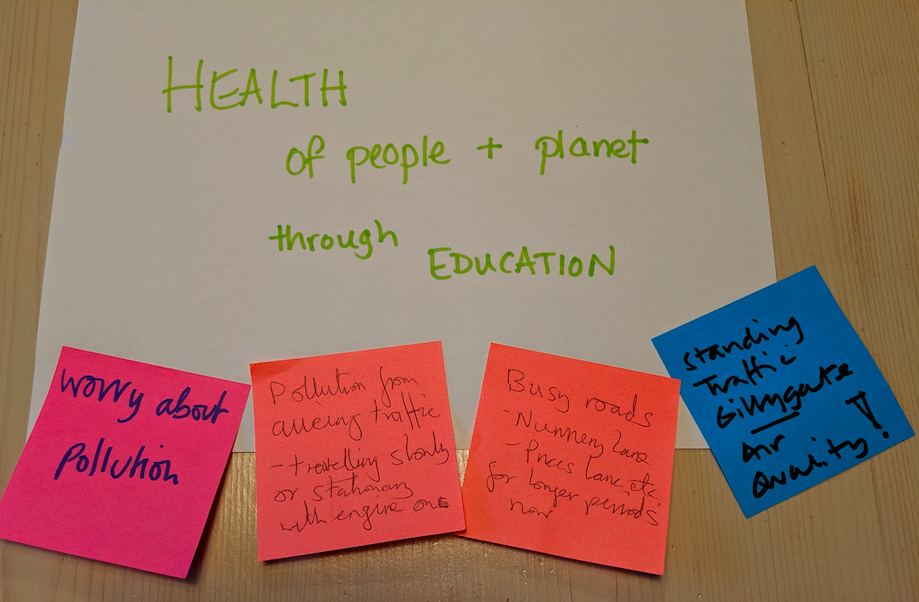
Citizens Assembly ‘Plus’: Building collective understanding and change
There was a shared interest in ensuring everyone in York understood the issues – the need to understand behaviour (for example “why do people make specific journeys in the way they do?”) and the role of education in bringing change were discussed.
Our reading of this – not something agreed at the event – was that this could be something to link to the Citizens Assembly and a way of potentially stoking both its legitimacy and capacities for making change. The vague boundaries of traffic congestion imply the need for broader deliberation, and the long-term nature and likelihood of change over time mean the conversation needs to be long-term. A Citizens’ Assembly would be a very positive way forward, but even better might be a Citizens’ Assembly Plus a connected citizen-driven framework whose broader work gives the Citizens’ Assembly greater capacity and insight.
York cannot self fund a lot of desirable transport infrastructure changes, and debate must be tempered by an understanding of the availability of regional/national funding.
Fascinating read . Wish I could have made the event but illness prevented me. I’d love to be part of a citizens assembly plus!
I am also very interested to talk to you to learn more about this iteration process for use in Leeds!